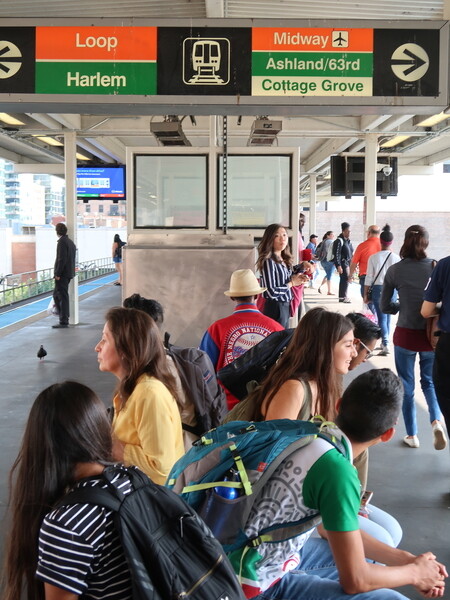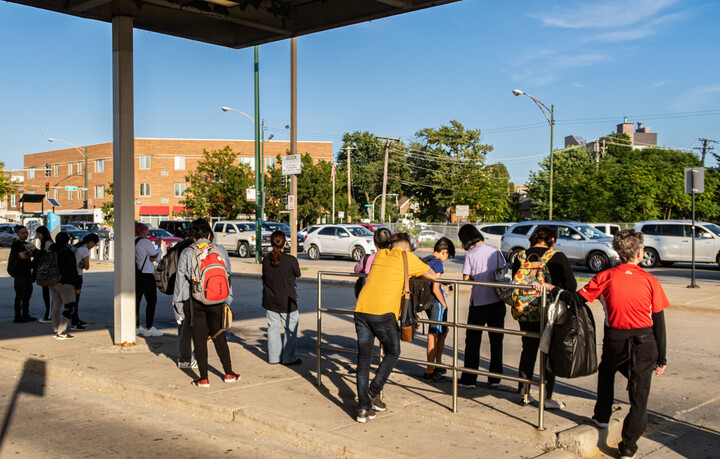The alarm bells are ringing loudly, and the stakes could not be higher.
Without immediate action, the Chicago region’s transit system faces a catastrophic breakdown that will ripple through communities, businesses, and the economy.
If the Illinois legislature fails to pass a transit funding bill by the end of May, the consequences will be devastating.
Tens of thousands of residents who depend on public transit for work, healthcare, and daily needs will find themselves stranded.
To balance budgets, transit agencies may be forced to slash up to 40% of services. This could mean entire train lines shutting down, over 70 bus routes disappearing, and the complete elimination of weekend service for Pace buses.
To avert this catastrophe, the state needs to approve $1.5 billion annually in additional operating funds for public transportation operations. This funding would avert service cuts and pave the way for significant improvements to enhance the rider experience.
What brought us to this funding crisis?
Our transit system has long been starved of stable funding, and the pandemic delivered a brutal one-two punch.
With ridership patterns still shifting—fewer downtown commuters, more hybrid work—fare revenues haven’t bounced back.
For now, federal COVID relief funds are plugging the gap, but that lifeline runs out in 2025.
Here’s the catch: transit agencies plan budgets a year ahead, and federal rules require service changes to be announced months in advance. That means the legislature has until the end of May to act—or riders will pay the price.
What if the legislature fails to act before May 31?
Transit agencies and the state operate on different fiscal calendars—a mismatch that creates a hard deadline. While transit budgets reset in January, Illinois’ 2026 fiscal year begins July 1, 2025.
To close the looming transit funding gap, lawmakers must secure new revenue in the state budget before their spring session ends on May 31.
Miss this window, and the consequences are stark. Amending the budget later would demand a lengthy, politically fraught process—all while transit agencies face impossible choices between devastating service cuts and unsustainable fare hikes.
Transit agencies will be forced to shift from growth to survival, halting critical projects like the Pulse expansion, Better Streets for Buses, and regional rail upgrades.
Instead, they will focus on planning for drastic measures: a 20% operating budget cut and up to 40% service reductions. This will trigger a nine-month scramble for agencies to prove that these cuts won’t disproportionately harm marginalized communities through a rigorous Title VI federal process.
The bottom line is that every month of delay redirects resources from transit improvements toward dismantling the system riders depend on, locking in irreversible damage that will be felt for years to come.

What’s the likely impact if the funding is not passed?
CTA, Metra, and Pace will be forced to make drastic, unprecedented service cuts, and likely, fare increases to balance their budgets.
- At least four of eight CTA rail lines will see service suspended on all or a portion of the line. CTA will close or drastically reduce service to over 50 rail stations.
- As many as 74 of CTA’s 127 bus routes could be eliminated, leaving 500,000 CTA riders without a nearby bus stop.
- Metra early morning and late evening trains would be eliminated, weekday trains would run only once per hour, and weekend trains just once every two hours.
- All weekend Pace bus service could be eliminated.
- The Chicago region could expect a $2.6 billion annual loss in GDP and the loss of 27,000 jobs.
- Workers throughout the region could lose out on $1 billion in wages.

If cuts are made, can’t they be restored afterwards?
Restoring service after cuts of this magnitude would be difficult; re-hiring laid-off operators and luring back riders would take years and ultimately cost much more than filling the funding gap.
Is there a possibility of a short-term fix?
Short-term fixes would likely worsen the funding crisis. Delaying action or implementing inadequate solutions will lead to prolonged uncertainty, deeper service cuts, and fare hikes.
Partial funding solutions will harm riders, as seen in other regions facing fiscal cliffs, where insufficient funding leads to service reductions, fare increases, and declining ridership—triggering a “transit death spiral.”
Fully addressing the budget gap is essential to prevent severe consequences for Chicago’s transit system.
What are some possible improvements to the transit system if full funding occurs?
With $1.5 billion in transit funding, Metra’s transformation into a regional rail system could become a reality, bringing more frequent service, better connections, and expanded access across the region.
Additional investment could also support transformative improvements, such as:
• Better CTA bus service, reducing wait times, improving safety, and expanding access across both Chicago and nearby suburbs.
• More Pace Pulse express routes.
• A new express route from Union Station to O’Hare International Airport
• 24-hour service to Midway Airport, making travel easier for shift workers and late-night flyers
The consequences of inaction are clear: a decimated transit system, economic stagnation, and irreparable harm to communities.
The time for delay is over—state lawmakers must fully fund transit operations before it’s too late.
To prevent a transit disaster that would take years—and enormous costs—to recover from, we need bold leadership and immediate legislative action.

